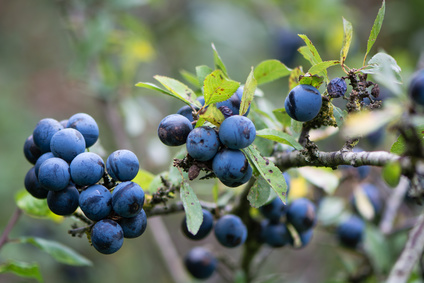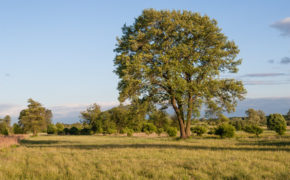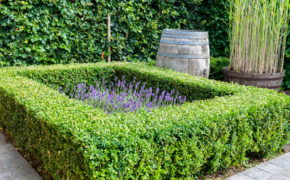
Get a quick no obligation quote It’s free and will only take a jiffy!
When Should I Prune my Blackthorn Tree?
Expert insight into the best time to prune a blackthorn tree; why blackthorn tree pruning is important, and how to identify common blackthorn tree diseases.
Blackthorn is a small, thorny deciduous tree native to the UK. Of the Latin Prunus spinosa, this tree is also known as ‘sloe’ and it will, with regular pruning, grow to heights of up to 7 metres and live up to 100 years.
Blackthorn bark is smooth and dark brown and the twigs develop into thorns. The wood is exceptionally tough and traditionally used to make walking or riding sticks as well as Irish shillelaghs. The fruit of the blackthorn, the sloe, is a well-known ingredient for flavouring gin and is also commonly used to make wine and preserves.
Why prune a blackthorn tree?
Blackthorn trees will not generally require too much pruning once mature, unless they are being used as a hedge, in which case they will benefit from a regular tidy-up to keep them in good shape.
Young blackthorn trees require regular pruning and training to promote thickness and a strong framework.
As with any tree, periodically removing branches that are congested is good practice as this will encourage improved light penetration and air circulation, both of which will promote the tree’s good health. Any decaying or diseased branches should also be trimmed out as soon as they are detected so that any underlying issues are prevented from spreading.
When is the best time for blackthorn tree pruning?
Formative blackthorn tree pruning and hedge trimming should ideally be carried out during the winter, when the tree is not in its active growth stage. During this time, the tree won’t bleed sap when cut, which means it won’t attract bacteria and disease carrying bugs.
If silver leaf is posing a problem, pruning should be undertaken in mid-summer. Silver leaf is a fungal disease that affects the leaves and wood of various trees, particularly those bearing fruits such as plums, apricots and cherries. The fungus gets into the wood through wounds, which is why careful pruning is essential. Once it has penetrated the tree, the fungus causes silvering of the leaves and then death of the branch. Because infectious spores are active between September and May, it is important to avoid pruning during this time, hence the instruction to prune in mid-summer.
Any branches that appear dangerous and posing a risk of falling from the tree should be removed without delay, but do engage a qualified tree surgeon as they will know exactly how to safely remove them. They will also have the knowledge to investigate the overall health of the tree, and to deal with any issues they find.
What to look for when pruning a blackthorn tree
As well as silver leaf disease, the blackthorn tree is susceptible to blossom wilt. This causes brown and shrivelled blossom and leaves and can ill smaller branches. The issue is caused by a fungus and occurs during the spring.
The blackthorn tree can also suffer damage from aphids and caterpillars as well as bullfinches, and the fruits can, from time to time, become distorted by a gall-forming fungus known as Taphrina pruni, or pocket plum. In the summer, look out for fruits without stones followed by a white bloom of fungus before the fruit shrivels and falls from the tree. Twigs bearing deformed fruit may themselves become deformed.
Tree Preservation Orders
You should never go ahead with any tree work until you can be certain that there is no Tree Preservation Order (TPO) applicable. If so, you must seek permission before proceeding, and this can take up to eight weeks to come through. What’s more, if the tree is situated in a conservation area, permission must be sought before commencing works of any kind.
Also be aware that if birds are found to be nesting in your blackthorn tree, which is a very common habitat thanks to its dense, thorny protection, you will not be able to proceed until they have left of their own accord.
The importance of blackthorn tree pruning expertise
The blackthorn tree needs regular attention in order to maintain its shape as a hedgerow plant, and during its formative years. Later on you will need to look out for signs of disease and be sure to remove any affected branches in a timely fashion.
Pruning a blackthorn tree is no easy task. Aptly named due to its spiky nature, the thorns of this tree are particularly hazardous and it has been known for people to sustain quite serious injuries and infections having been scratched or pierced.
If you have a blackthorn tree on your land or in your garden that you’d like to nurture, and if you are keen to harvest its abundant fruits and enjoy its glorious presentation of white flowers that appear before the fruits, then you should always call in expert assistance. Ensure your chosen tree surgeon is able to provide official certificates and checkable references and, where possible, use a Trading Standards approved tree surgeon for a guarantee of quality and value.
If you have a blackthorn tree that needs pruning, why not contact T.H. Tree Services? As fully qualified and highly experienced Trading Standards and local authority approved tree surgeons, we are able to offer specialist expertise across all aspects of blackthorn tree pruning. For a free, no-obligation quotation, contact our friendly experts on 01268 642814 or get in touch here.
Had a fallen tree in the early hours of Monday morning, called for quote and the team had it cleared on the same day. Really good communication when the lads were onsite and did a great job. Lots of pride in their work shown with the thorough clear up. Would thoroughly recommend.
Thank you Stuart for your kind review. We were glad to be able to help you with your fallen tree. If there's anything else you need in the future, please don't hesitate to get in touch.








